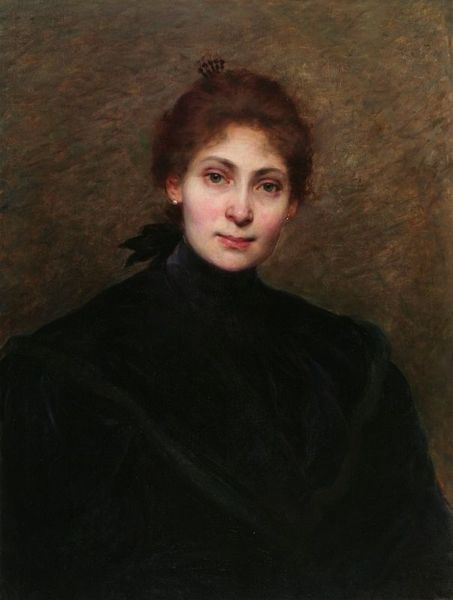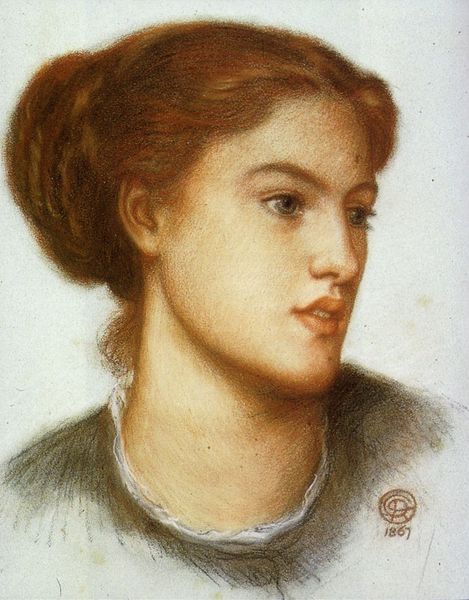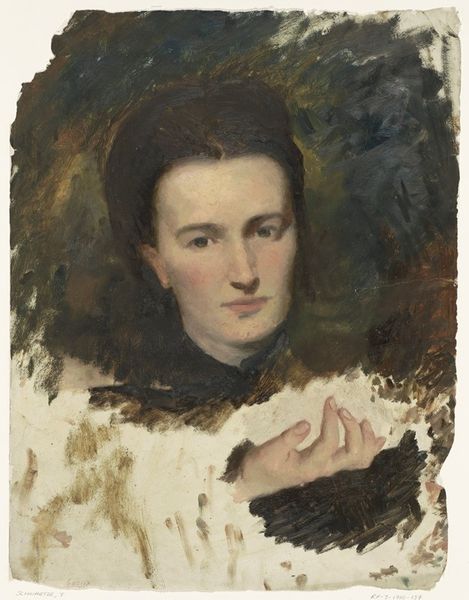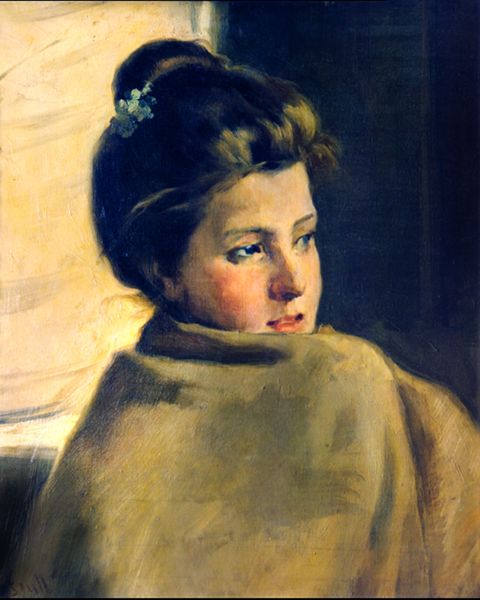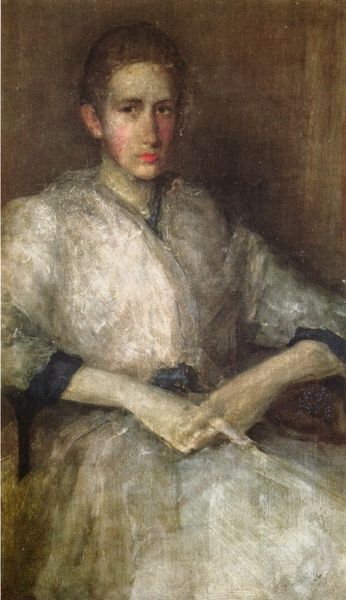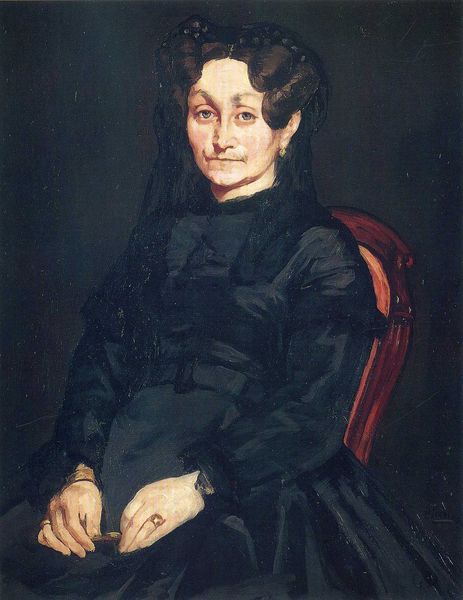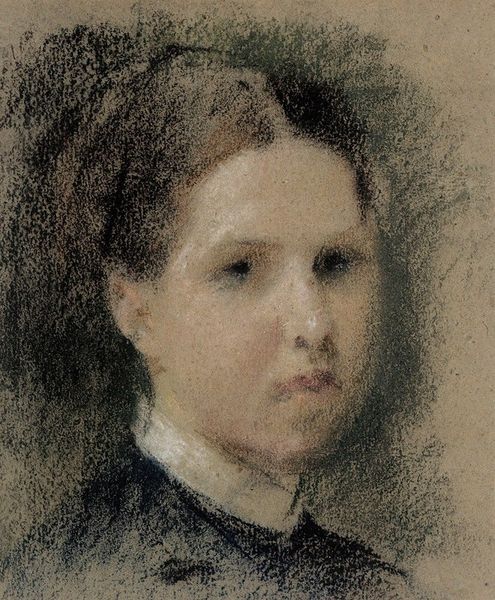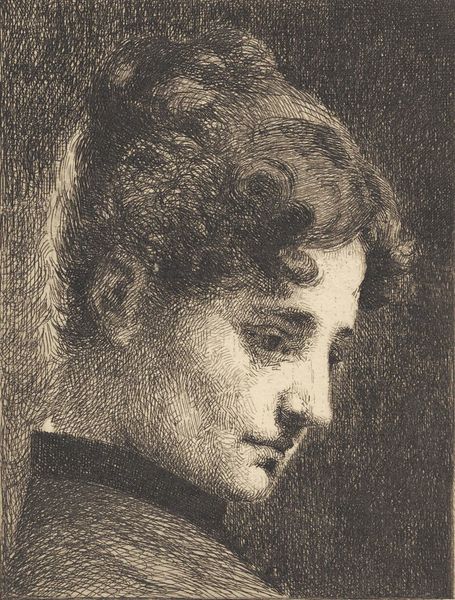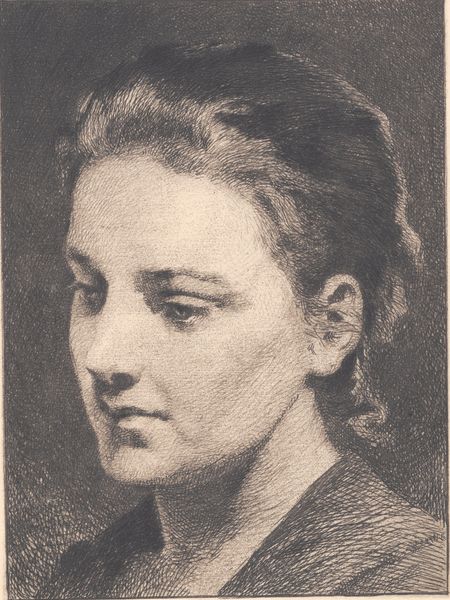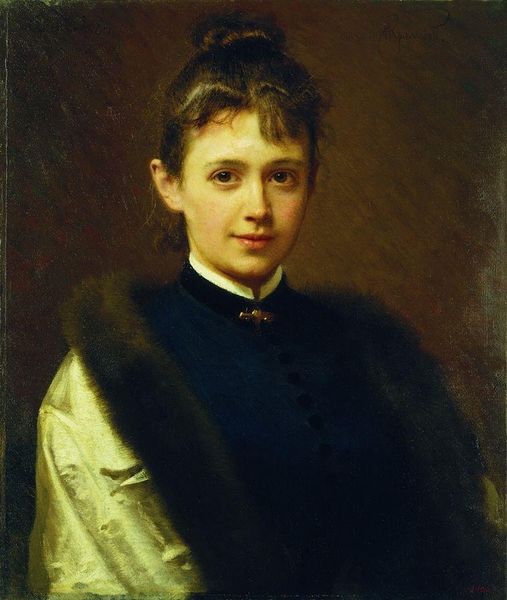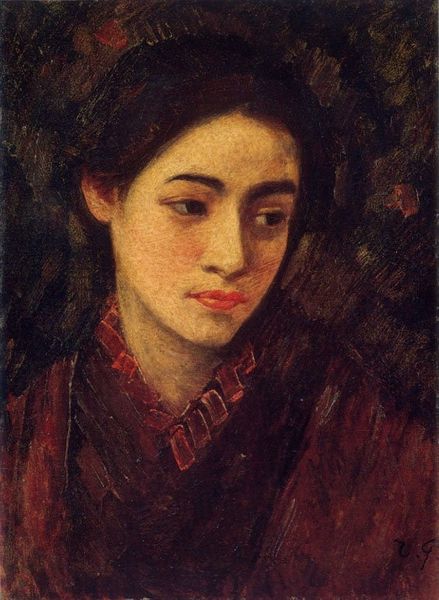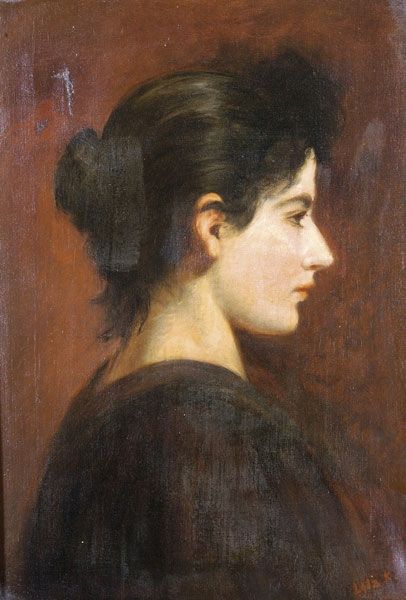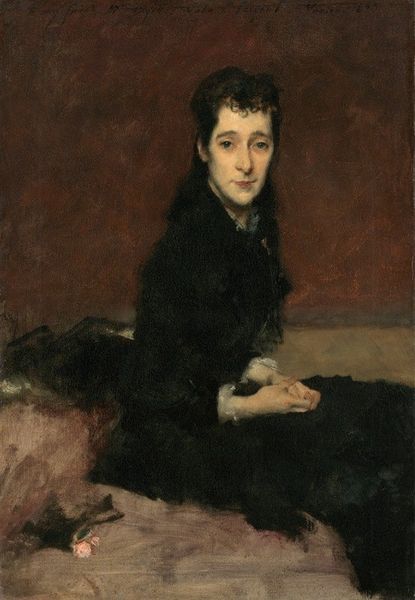
Copyright: Public domain
Editor: This is "Portrait of Kriesch Laura" by Aladar Korosfoi-Kriesch, painted in 1894. The muted tones create a very intimate and somewhat melancholic feeling. What’s your take on this particular piece? Curator: Considering its historical moment, I'm drawn to the portrait's representation of women within fin-de-siècle European society. We see the subject, presumably from the artist’s intimate circle, framed against an ornate backdrop, highlighting both her domestic sphere and her individuality. Notice how the artist doesn't idealize her, a move away from the academic portraits commissioned by the bourgeoisie. How does this unidealized portrayal sit with you? Editor: It feels more honest somehow, less about social posturing and more about capturing a person. Were these kinds of portraits becoming more common? Curator: Precisely. As artistic movements began challenging the established norms of patronage, there was a rise in intimate portraits, often depicting artists' family and friends. This shifted the focus from portraying status to exploring individual psychology. And you can really see intimism there! It begs the question, though: who had access to even *this* form of art at the time? Editor: I guess even intimacy was still a privilege of a certain class. So, it reflects changing societal values, but also the limitations of who got to participate in those changes. Curator: Exactly. And this challenges us to think about whose stories are being told, and whose are being left out, even within seemingly progressive movements. Editor: That's given me a lot to think about. It’s interesting to consider how this portrait interacts with the broader societal currents of its time. Curator: Indeed. It prompts us to question the evolving role of art and portraiture in shaping identity and social narratives.
Comments
No comments
Be the first to comment and join the conversation on the ultimate creative platform.
